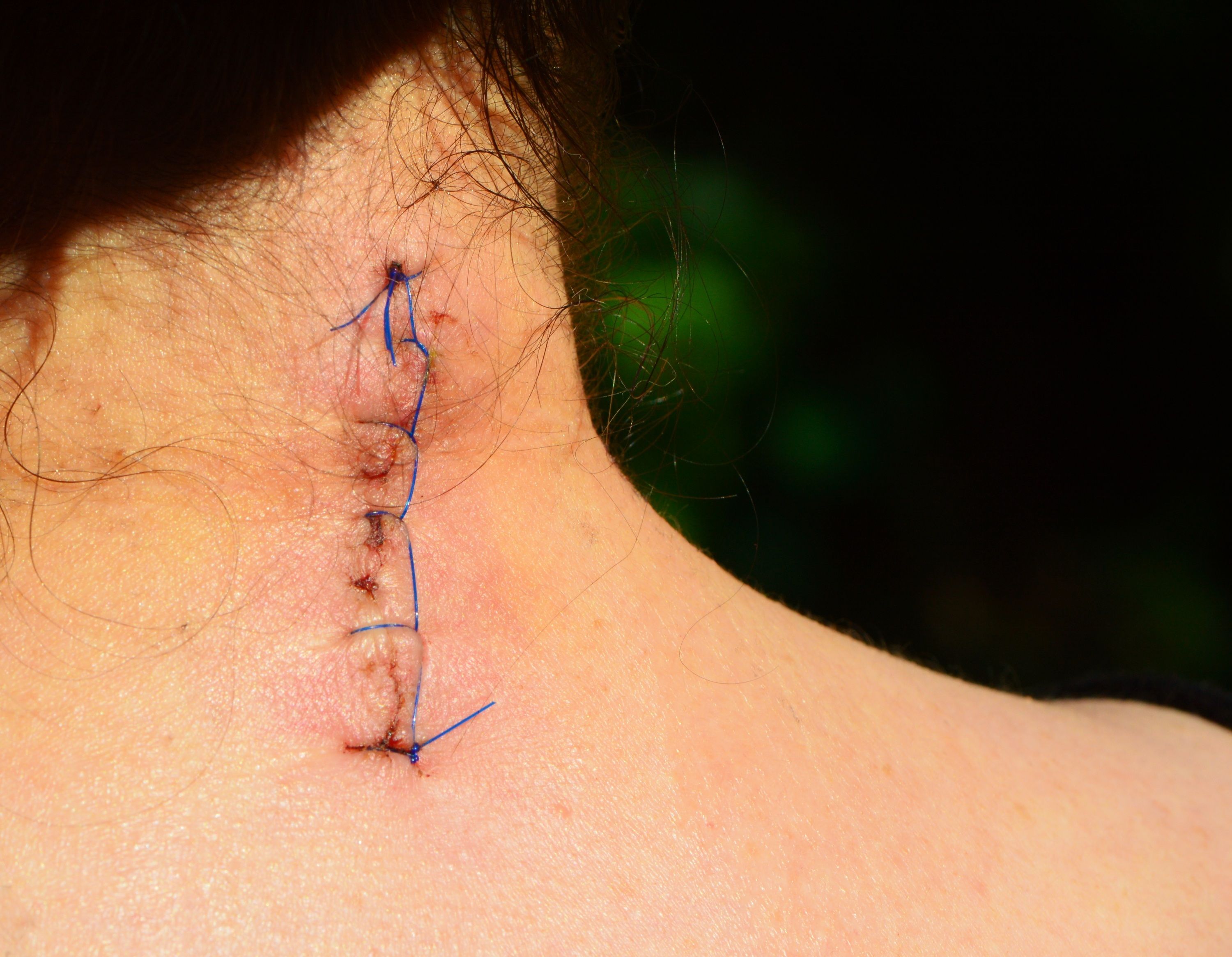The True Cost of Spinal Fusion Surgery: Beyond the Hospital Bill
Spinal fusion surgery, the process of permanently joining two or more vertebrae, is often presented as the definitive solution for debilitating back and neck pain. While it can be a necessary procedure for stabilizing the spine after a trauma or for a severe deformity, its widespread use for common conditions like degenerative disc disease has made it a central pillar of the multi-billion-dollar spine industry.
But the cost of this procedure is rarely confined to the numbers on the final hospital bill.
The true toll of spinal fusion extends into every aspect of a patient's life: their savings, their body’s functionality, their mental health, and the stability of their family unit. We must look at this invasive procedure with clear eyes, separating the promise of pain relief from the complex, often devastating, reality of what it demands from a patient and their loved ones.
The Crushing Financial Cost
The initial sticker shock of a spinal fusion is high enough. Studies show that the mean direct cost for a single-level lumbar fusion is around $22,890, with surgical supplies (specifically implants) accounting for nearly 44% of that cost alone. However, this figure is highly misleading. When you factor in ICU, imaging, extended hospital days, and device markups, a single fusion might cost $80,000 to $150,000 or more. And in extreme scenarios, with revisions or complications, some patients report cumulative costs creeping toward $500,000 over time.
Why fusion is so expensive
A complex, high-volume market drives this immense cost. Approximately 400,000 spinal fusions are performed annually in the United States.
The economics of fusion surgery are structured to maximize profit, not necessarily patient outcome:
- Implants & device networks. The screws, cages, rods, and biologics are all proprietary and heavily marked up. Device companies often build local distribution networks around high-volume surgeons, creating locked-in supply chains.
- Hospital margin harvesting. Every minute in the OR, every scan, every lab test, and pharmacy dose is charged for as a separate line item with significant markup. Hospitals view fusion as one of their highest-margin procedures.
Surgeon fees & overlapping billing. The surgeon’s professional fee may run in the tens of thousands, and additional services (neurophysiology monitoring, anesthesia, intraoperative imaging) add up fast.
The post-op cascade
After the surgery is completed, recovery can drive additional expenses for years to come. Rehab, bracing, imaging, pain management, ER visits, and hardware failure, all produce additional bills. What starts as an “$80k surgery” can easily balloon when complications arise. A successful recovery often requires a transfer from the acute care hospital to specialized facilities, in-home therapy, and extra equipment:
- Skilled nursing/inpatient rehabilitation: Patients who do not meet the criteria for a "home discharge" are transferred to post-acute care facilities (PAC). For Medicare patients, even with coverage, the coinsurance can be substantial, for example, $209.50 per day. The costs associated with these multi-week stays are a major factor in overall payment variation for spinal fusions.
- Physical and occupational therapy: Long-term functional recovery relies on intensive therapy. Studies indicate that patients may receive an average of 25 physical therapy sessions in the year following fusion. Without insurance, sessions can cost $75 to $150 or more each, quickly accumulating to thousands of dollars in out-of-pocket costs, even with partial insurance coverage.
- Home care and equipment: The costs of in-home nurses, specialized beds, mobility aids (like walkers or braces), and necessary home modifications can rapidly compound the financial pressure on the patient and their family.
- On-going related claims: One study found that 70% of patients incurred an average of $9,383 in additional medical claims within two years post-fusion.
- Narcotic dependence: Long-term opioid use is a major concern and a major cost. A significant percentage of patients (sometimes over 60%) who receive narcotics for 30 days or more after fusion continue to receive them more than one year later, leading to sustained pharmacy costs averaging thousands of dollars per patient.

When the initial fusion fails (a condition known as Failed Back Surgery Syndrome) or causes a new problem like Adjacent Segment Disease (ASD), the cost cycle restarts with even greater intensity. Revision surgeries are invariably more complex, time-consuming, and carry a higher risk and higher charges than the primary fusion.
Before accepting the need for such a costly procedure, patients must fully explore all alternatives that promise relief without the massive price tag and potential for complications, like those reviewed in A Review of Options to Spinal Fusion Surgery. Understanding the financial breakdown is the first step in assessing the True Cost of Spinal Fusion Surgery.
The Physical Cost: The Body Pays the Price
Spinal fusion is a profoundly invasive procedure. The goal is to stabilize the spine, but this stability comes at the expense of mobility and often introduces a new form of chronic pain.
Surgical trauma & scar burden
To reach the spine, muscles, ligaments, and soft tissues are disrupted. That damage causes postoperative pain, weakness, and long-term deconditioning. Over weeks to months, scar tissue (fibrosis) may tether nerves, creating new pain sources beyond the original diagnosis. Deuk Institute's blog on Spinal fusion surgery risks discusses some of these pitfalls.

Loss of motion & adjacent stress
Fusion often reduces overall movement. The stresses don’t vanish; they simply shift to the adjacent segments. Over time, those levels may degenerate faster (adjacent-segment disease), and many patients feel stiffness, weakness, or pain when bending, twisting, or lifting. Patients can face severe limitations for up to a year. Furthermore, because fused vertebrae can no longer move independently, the patient can experience a permanent loss of full flexibility and reduced movement ability.
Complications, nonunions & revisions
Not every fusion fuses. Pseudarthrosis (non-union), hardware failure, screw loosening, and implant migration are all possibilities. Revision surgery is common. If the approach was anterior (through the abdomen), bowel mobilization, vascular retraction, and visceral trauma may occur, leading to GI dysfunction, ileus, or severe pain. Add in opioid-related constipation and secondary GI care, and that complication becomes its own billing nightmare. For more information about continued pain after fusion, read Failed Back Surgery.
Infection and wound issues
Infection, poor wound healing, and non-union (when the bones fail to fuse, known as pseudarthrosis) are common complications, occurring in as many as 5–20% of cases. Complications like cerebrospinal fluid leaks, excessive bleeding, and nerve root injury are also recognized risks.
Persistent symptoms & dissatisfaction
Many patients walk away not pain-free, but with “different” pain. Residual numbness, stiffness, muscular fatigue, or new pain from soft-tissue injury is common. Some report that the incision or scar itself becomes the more painful area.
If you want to see how Deuk Spine frames preserving motion, check Laser Spine Surgery: How it Works.
It's also worth noting the differences in surgical training: an orthopedic surgeon is trained extensively on structure and bone, and may prefer an anterior (through the front) approach, while a neurosurgeon is trained on the nerves and spinal cord, typically preferring a posterior (through the back) approach. For such a delicate and life-altering surgery, ensuring the practitioner has the most relevant expertise is critical.
The Invisible Mental and Emotional Burden
The physical trauma of a spinal fusion is often accompanied by an equally severe mental and emotional cost. For many, the goal of surgery is to return to a pain-free life, yet the reality is often the development of Failed Back Surgery Syndrome (FBSS), persistent, chronic pain after the operation is technically complete.
This failure to achieve the promised outcome can trigger a profound emotional decline.
- Postoperative depression: Patients frequently experience high rates of depression and anxiety, especially when they were not expecting the degree of postoperative pain or the necessary physical limitations. Pre-existing psychological distress is already high among chronic pain patients, with up to 59% of individuals presenting to spine clinics showing symptoms of a psychological disorder. When the physical pain of the procedure is added, including pain caused by nerve irritation or the formation of scar tissue, the mental toll can be crushing.
- Unmet expectations and isolation: Patients are often not fully prepared for the long, difficult road to recovery. The realization that they cannot move, work, or care for themselves for months on end, coupled with the persistent pain, can lead to deep feelings of isolation and despair. Psychological distress has been shown to be associated with worse surgical outcomes, leading some experts to suggest that pre-surgical psychological screening should be a standard part of the patient evaluation process.
- Opioid dependence: The need for powerful narcotic painkillers to manage postoperative pain introduces additional mental and physical risks associated with opioid dependency.
This cycle of persistent pain and psychological decline is a severe cost that traditional billing overlooks, yet one that can permanently alter a patient's quality of life. Understanding Chronic Back Pain in this context is essential before committing to a surgical solution that may create a new, life-long condition.
The Unspoken Cost to Your Family

A major spinal operation is not just a burden on the patient; it is a crisis for the entire family. Every detail of a life changes, no matter what.
For weeks, and often months, you become completely reliant on the people around you to do the basics. You cannot bend to tie your shoes, lift a bag of groceries, or twist to put on a jacket. This level of dependence forces family members, like spouses, children, or friends, into the role of full-time, unpaid caregivers. They must take on:
- Physical assistance: Helping with bathing, dressing, and simple mobility within the home.
- Domestic management: Taking over all household chores, cooking, driving to follow-up appointments, and running all errands.
- Financial strain: In addition to the patient's potential inability to work, a caregiver may also have to take significant time off, creating a dual income hit to the family finances.
This dramatic shift in roles places an immense burden on the caregiver. Studies have shown that caregivers of post-spinal surgery patients frequently report high levels of stress, anxiety, sleep problems, and chronic fatigue. The pressure to manage the patient’s severe limitations and pain, while also juggling their own life responsibilities, is substantial. This change often strains relationships, as a partnership shifts temporarily into a patient/provider dynamic.
The recovery process for a major fusion can mean physical limitations for close to a year, during which time the family's life is put on hold. This cost, the sacrifice of time, energy, and mental peace by your loved ones, is perhaps the most personal and least discussed aspect of spinal fusion surgery. Before proceeding, it is critical to have a frank discussion about the caregiving requirements and the potential for a difficult and prolonged recovery.
MAKE YOUR FIRST PAIN-FREE MOVE
If you’re seeking relief from lumbar pain, have been recommended for a TLIF spinal fusion, or are still dealing with chronic neck pain after a failed fusion surgery, we can help improve your quality of life and enable you to live pain-free. Spinal fusion is a major procedure with costs—financial, physical, and emotional—that are often too great.
Upload your latest MRI for a free review and a personal consultation with myself, Ara Deukmedjian, M.D., founder of Deuk Spine Institute and creator of the Deuk Laser Disc Repair® procedure.
